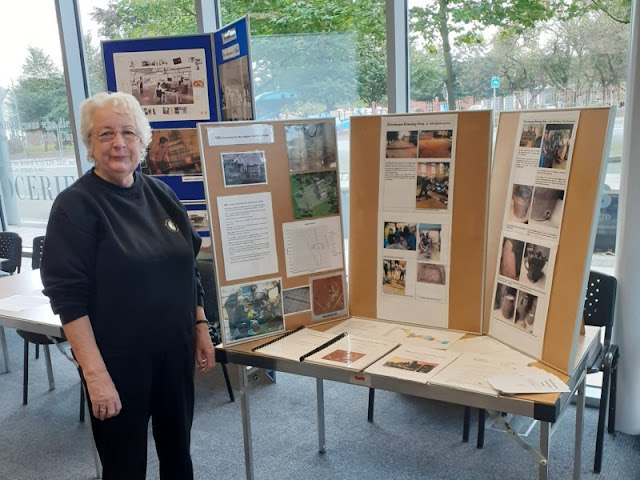Our November meeting was taken up with summaries of projects that were either completed during the year or are still in progress. In fact, we had so much to discuss that there was insufficient time to cover some of the digs and research we'd carried out.
- The Albrighton project report is complete and is being submitted to interested parties. It will be available here on the website very soon. As usual (!) the dig raised at least as many questions as it answered but we were able to say with confidence that our objective - to find traces of the old market hall - had been met. We anticipate a return to Albrighton very soon to investigate the northern end of the village and perhaps throw more light on the medieval market.
- Our Coven project searching for early iron-smelting is on-going. Since digging test pits in the summer we have uncovered possible evidence for iron making on a wider scale. Our area of investigation has been extended and we will be carrying out a geophysical survey of areas of interest as soon as we get a spell of dry weather.
- The Oak House report is complete and will be submitted in due course. The finds from our dig correlate well with the age of the house and feedback from visitors was extremely positive - another successful mission! Maybe we will find evidence of earlier activity when we make a return visit in the near future?
- The East Park Academy school project was also extremely well received by pupils and staff. Hopefully we will have inspired a few youngsters to take a life-long interest in archaeology and history. As expected, we found a tremendous amount of waste from the furnaces and collieries which dominated the area during the 19th century and once again the report will be available on our Reports page very soon.
As well as further work on three of the projects mentioned above, we have an on-going scheme at Wrottesley and a second survey and dig planned at another site near Coven - next year promises to be at least as busy as 2019!







































